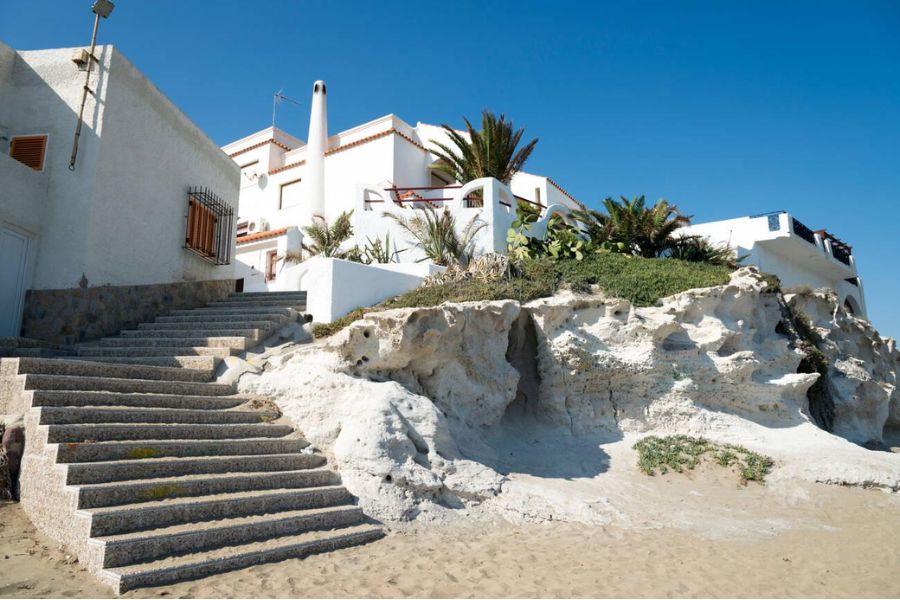There’s this corner of Spain’s southern coast where wild desert meets volcanic cliffs, and the sea flashes with these unreal shades of blue. Cabo de Gata-Níjar caught me off guard with its quiet coves, sandy stretches, and villages that seem tucked away from the rest of the world. Each evening, the sky exploded into color before fading into some of the clearest, star-filled nights I’ve ever seen.
I wandered rugged trails, watched sunlight play across jagged rocks, and stumbled into tiny fishing villages where time just seemed to slow down. The local food tasted fresher, salty breezes cooled me off, and every twist in the path revealed a new view or a secret beach.
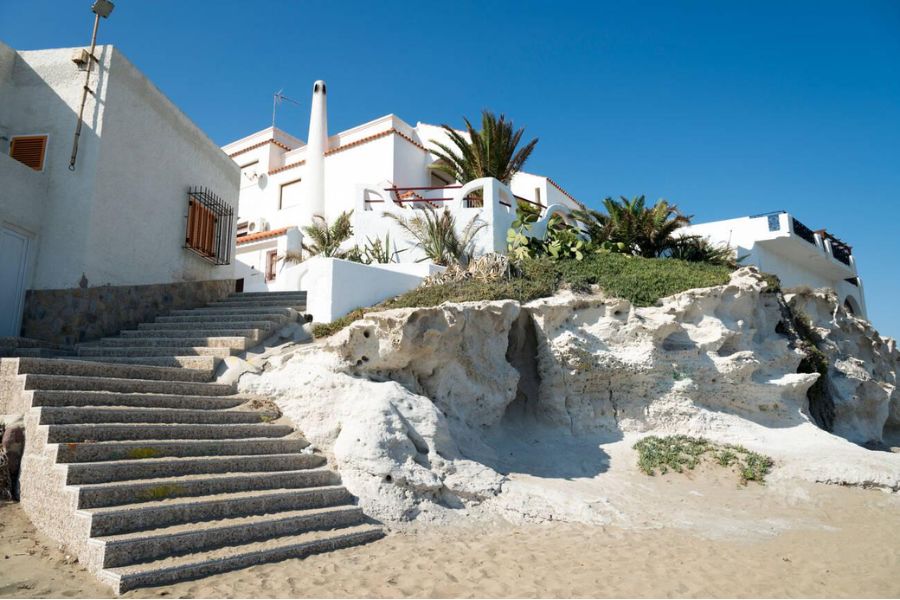
If you’re itching for adventure far from the usual crowds, or just need a peaceful place to breathe, Cabo de Gata-Níjar really does have something special. Come along as I share my escape to Andalusia’s wild, volcanic coast—one hidden cove, winding path, and quiet night at a time.
Journey Into Andalusia’s Untamed Cabo de Gata-Níjar
Cabo de Gata-Níjar’s landscapes hit me as raw and ancient, shaped by volcanoes and African winds. I wandered peaceful, empty beaches and strange desert hills that made every moment outside feel fresh and inviting.
From my first look at the coastline to wandering deeper into the park, I realized there’s way more here than just sun and sand.
First Impressions of the Coast
When I arrived, Cabo de Gata-Níjar looked nothing like other Mediterranean spots I’d seen. The coast stretched out in bold, rocky lines, with wide, empty beaches and steep cliffs falling into the water.
No neon signs, no packed boardwalks—just sky and endless blue sea.
- I watched fishermen tidy up their boats near quiet villages.
- The salty air mixed with wild herbs.
- Even in spring, the beaches felt untouched.
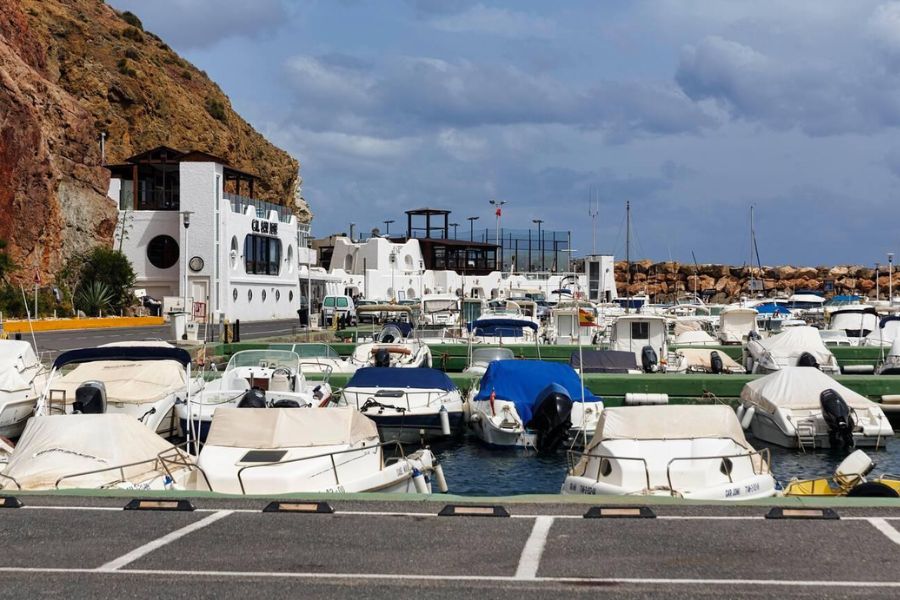
My first walk took me from soft sand up rocky trails where flowers somehow grew out of stone. Every turn brought something new—a hidden cove, a jagged ridge, or white houses scattered across dry hills.
By sunset, I finally got why people call this place wild and authentic.
Navigating a Land of Volcanoes and Desert
Heading inland, I found a rocky desert dotted with old volcanic cones and pale green plants. The sun beat down, but breezes kept things cool.
Paths wound past low black stone walls, built long ago to shield fields from the wind. These ancient volcanoes shaped Cabo de Gata-Níjar into steep hills and wide, stony plains.
Hiking turned out to be the best way to explore. Some popular trails:
| Trail Name | Distance | Highlights |
|---|---|---|
| Las Salinas Route | 6 km | Flamingos, salt flats |
| Cala de San Pedro | 3.5 km | Remote beach, turquoise waters |
| Pico de los Frailes | 8 km | Highest peak, panoramic views |
I stopped often to spot wildlife. Lizards zipped between rocks, and birds soared overhead. The mix of desert and sea is rare in Europe, and every view felt special.
Getting to Cabo de Gata-Níjar
Getting to Cabo de Gata-Níjar took a bit of planning. Almería is the closest city, about 40 minutes by car.
I flew into Almería’s small airport, then grabbed a rental car for the last stretch—a smart move, since public buses don’t reach most villages or beaches in the park.
As I drove along the coast, the road kept narrowing. Signs pointed to villages like San José or Las Negras, but open stretches with barely any traffic were the norm.
You’ll find parking near the main beaches, while the hidden coves usually mean a short hike.
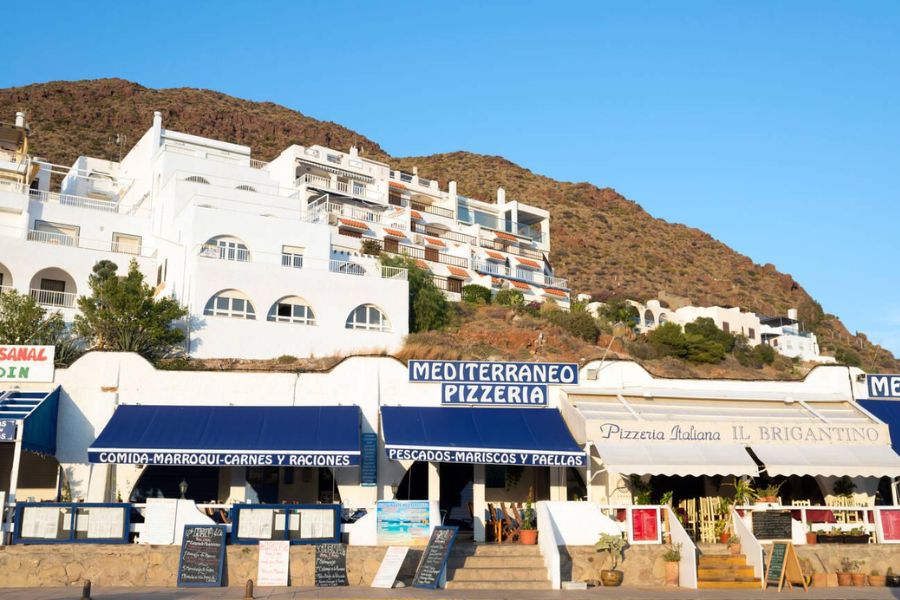
Tip: Bring good shoes and plenty of water. If you’re planning to wander into the quieter corners or tackle longer trails, you’ll want both.
Every step took me deeper into a part of Spain I’d only read about—one that rewards slow travel and a curious spirit.
Desert Landscapes and Volcanic Wonders
Cabo de Gata-Níjar wowed me with its rugged beauty, shaped by volcanoes and time. Dry hills, weird rock shapes, and unique wildlife made every walk feel like a trip through another world.
Hiking Ancient Lava Fields
Once I laced up my boots and hit the trails, I realized these weren’t your average hiking paths. The ground crackled underfoot, black and red lava rocks twisted into wild shapes.
I traced old lava flows and saw how ancient volcanic eruptions carved out the ridges and deep gullies across the park.
Some trails ran over soft, sun-baked earth, while others climbed rocky slopes with views of the Mediterranean that just stopped me in my tracks.
It felt almost alien—hardly any trees, just scattered shrubs and the silhouettes of volcanic cones against the sky. Hiking here mixed challenge with wonder, so I always packed water, a hat, and sturdy shoes.
A few spots had rest areas with signs that explained the volcanic history. Learning that these eruptions happened millions of years ago made the landscape feel even more mysterious.
There’s something quietly beautiful about seeing nature’s power frozen in time under the hot Andalusian sun.
Native Flora and Fauna Encounters
Even with all the dryness, life in Cabo de Gata-Níjar pops up everywhere if you look close. Small bursts of green showed up along the paths—agave, prickly pear cactus, and wild thyme and rosemary that scented the air.
I spotted groups of birds circling above or darting between rocks. Hoopoes and kestrels are pretty common, and if you’re lucky, you might spot a rare eagle.
Lizards darted across my path, vanishing into the stones almost instantly.
Sometimes I stopped in the shade of a scrappy palm, part of the only real desert in Europe. Signs reminded me to respect the fragile plants and not pick wildflowers.
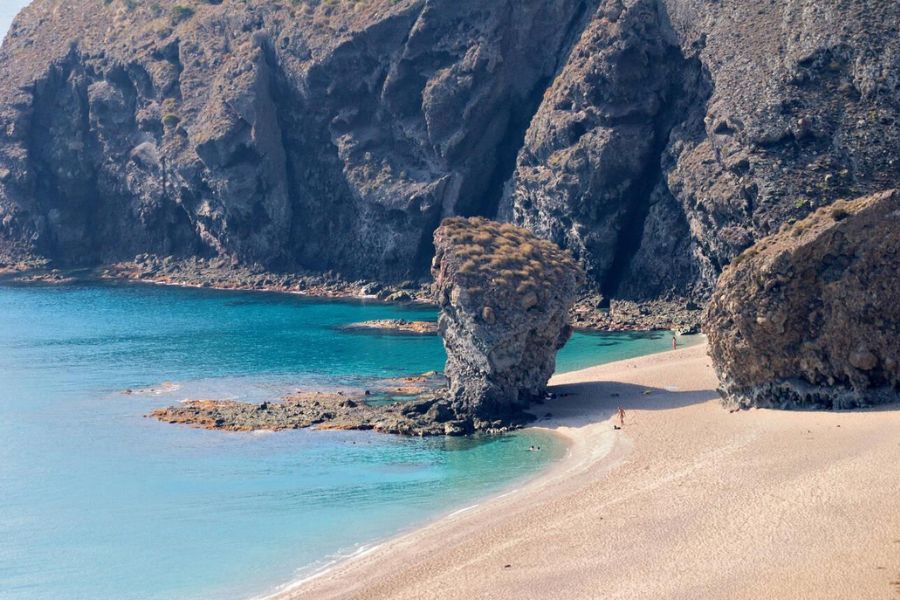
Every plant and animal here has found a way to survive the salty winds and dry heat, and every sighting felt kind of special.
Unique Geological Formations
Honestly, the geology here is like nowhere else I’ve seen in Spain. Jagged cliffs drop to quiet coves, and rock outcrops jut out like giant sculptures shaped by wind and waves.
I kept coming back to the famous Arrecife de las Sirenas, a cluster of sharp rocks rising from the blue sea—not far from the old lighthouse.
Walking along the beach, I noticed patches of black sand, proof of volcanic ash from long-ago eruptions. Mermaid’s Reef was another favorite. The rocks there form tall fins and pinnacles, and at sunset, they glow gold.
Several info panels explained how mineral-rich lava cooled into wild patterns over time.
Here’s a quick look at the most eye-catching local formations:
| Formation | Notable Feature | Location |
|---|---|---|
| Arrecife de las Sirenas | Pointed volcanic outcrops | Near Cabo de Gata Lighthouse |
| Mermaid’s Reef | Tall, fin-like rock shapes | Playa de las Sirenas |
| Black sand beaches | Volcanic ash mixed with sand | San José and surroundings |
Finding these formations made geology feel real—I could see, touch, and even sit on the rocks that built this wild coast.
Exploring Hidden Coves and Secret Beaches
Cabo de Gata-Níjar hides some of Spain’s most untouched beaches, where dramatic cliffs crash into turquoise water. Volcanic rocks and clear seas set the scene for both adventure and total relaxation.
Uncovering Playa de los Muertos
Standing at the top of the rocky path, I caught my first glimpse of Playa de los Muertos. The name means “Beach of the Dead,” but don’t let that put you off.
The walk down is steep and dusty, winding through wild desert slopes, but at the bottom you get a quiet stretch of pebbly sand far from any crowds.
Waves crash onto pale stones, smoothed by years of sea and sun. There’s no kiosks, no umbrellas—just wind and water.
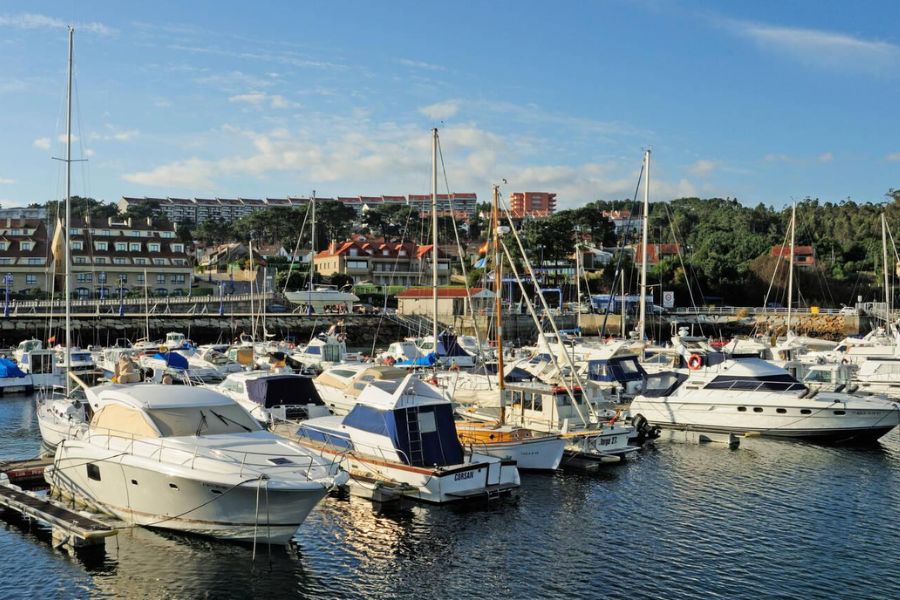
I spread out my towel and watched sunlight bounce off the deep-blue water. Swimmers drifted by, their bodies outlined in shimmering rays. Finding a spot like this felt like pure freedom.
Tips for visiting:
- Bring water, snacks, and an umbrella—there’s no shade or shops.
- Wear sturdy shoes on the walk down; flip-flops won’t cut it.
- Come early to beat the midday sun and grab the best spot.
Snorkeling Crystal-Clear Waters
What really pulled me to Cabo de Gata’s hidden beaches was the snorkeling. Underwater, the coast bursts with life—shoals of fish weaving through rocks and swaying sea grass.
Every swim took me past bright reefs, rocky crevices, and darting silver fish.
Some of the best snorkeling is around Playa de los Genoveses and Cala de Enmedio. On calm days, the water is so clear I could see the sandy floor meters below.
I’d bring my own mask and snorkel, since you won’t find rentals in the more remote coves.
Snorkeling checklist:
| Item | Why Bring? |
|---|---|
| Snorkel & mask | Clear views under water |
| Water shoes | Protect feet from sharp rocks |
| GoPro or camera | Capture colorful sea life |
Diving into these underwater worlds was a highlight of my trip.
Guided Kayak Adventures
Kayaking along the coast opened up a whole new view of the volcanic cliffs and secret beaches. Guided tours start from little seaside villages like San José or Las Negras.
Paddling out in the early morning, I felt the cool spray and heard gulls overhead.
The guides told stories of pirates and hidden caves as we slid past narrow rock arches. Some trips stop at beaches you just can’t reach by car—perfect for a swim or a picnic.
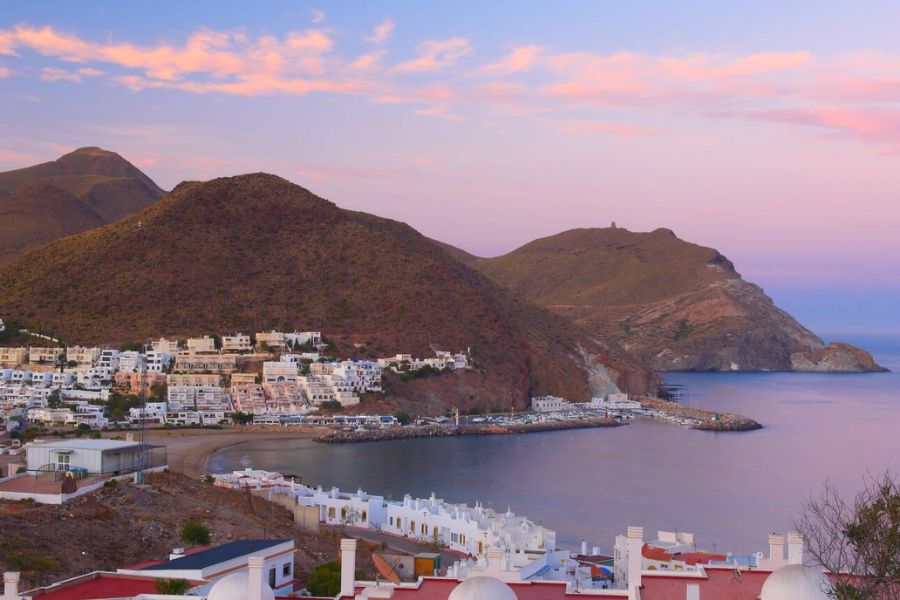
Kayaking here isn’t just a workout; it’s a way to see the wild side of Andalusia.
Why choose a guided tour?
- Local guides point out hidden caves and wildlife.
- All safety gear and instructions are included.
- Great for solo travelers or anyone new to kayaking.
After exploring by kayak, I totally got why people fall for this sun-soaked, rugged stretch of Spain.
Life in the Whitewashed Villages
Wandering through the villages around Cabo de Gata-Níjar feels like stepping into a slower world. Each whitewashed town brings its own vibe, from lively plazas and seaside views to unique crafts and echoes of old industry.
San José: Coastal Vibes and Local Eats
San José sits right on the shore, with narrow lanes running down to a fishing port full of boats and a wide beach. In the mornings, I watched older men mend nets while kids played along the promenade.
The town’s easygoing mood comes alive in its cafés and small restaurants. I loved sitting in the shade with a cold drink, tasting grilled octopus and fresh seafood.
At dusk, families strolled the promenade, and restaurants set out tables for dinner under the stars.
Shops sold ceramics, beachwear, and paintings by local artists. For sunset, I’d walk to the far end of Playa de los Genoveses, listening to the waves and watching the light fade over the cliffs.
Níjar’s Artisan Markets
Níjar sits inland, tucked against rugged hills, and is known for its crafts and colorful markets. On market days, the central square buzzes with stalls loaded with terra-cotta pots, woven rugs, baskets, and blue-and-white ceramics.
I haggled for a jar painted in the region’s deep reds and blues.
Wandering the backstreets, the white houses nearly blinded me in the sun. Cactus and flowers spilled from balconies.
I stopped at a workshop to watch artisans weaving jarapas—thick, bright blankets and rugs that make perfect souvenirs.
Locals always seemed happy to chat about their town, sharing tips on the best olive oil or the perfect spot to watch the mountains glow at sunset.
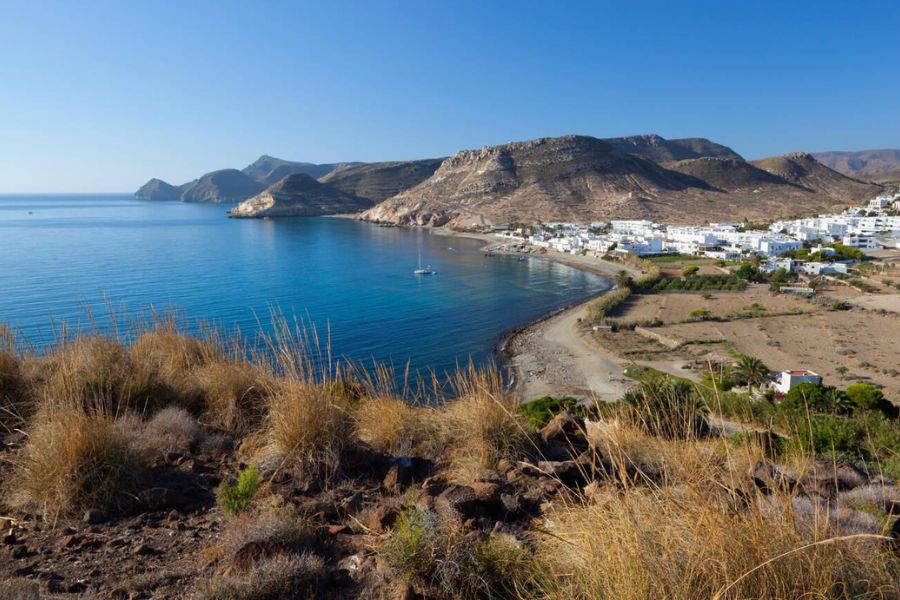
I never left without a handful of almonds or a chunk of sticky, sweet nougat.
Rodalquilar’s Deserted Mining Past
A few miles down a twisting road, you’ll find Rodalquilar. This village sits in the desert, marked by abandoned gold mines and a strange, lonely beauty.
The landscape feels remote—almost haunting. Crumbling buildings from the old mining days still cling to the hills, their yellow stones glowing under the harsh blue sky.
As I wandered through this ghostly part of the village, I started picturing what life was like when prospectors hunted for gold. Now, nature creeps in. Wildflowers push up through cracks in the pavement.
Not far away, there’s an old botanical garden full of local succulents and cacti. I found it made a peaceful spot to sit and let my mind wander, imagining stories from long ago.
A tiny bar nearby served up a simple lunch—just local cheese and bread. Honestly, food tastes better after hiking under the sun.
Starry Nights and Desert Magic
When daylight fades in Cabo de Gata-Níjar, the desert transforms. The open skies turn pitch black, and the stars pop out—so many, it’s almost hard to believe.
The quiet here adds a kind of magic you don’t get anywhere else. There’s barely any light pollution, so stargazing feels unreal. Camping out or just lying back to watch the sky makes you feel close to nature in a way that’s hard to describe.
Stargazing Experiences
Every time night falls over Cabo de Gata-Níjar, I feel a wave of awe. The sky turns into a massive canvas, packed with stars that look sharper and brighter than anywhere else I’ve been.
Astrotourism draws people in because the skies are so clear and there aren’t any city lights to spoil the view.
Local guides run astronomy tours, bringing telescopes and a ton of enthusiasm. They help you spot constellations and planets, weaving in stories and science as they go.
Some tours include short walks to quiet lookout points. I love wrapping up in a blanket, sitting back, and waiting for a shooting star or two.
A few companies mix stargazing with bits of local legend or history. If you’re curious about the night sky, bring binoculars, a red torch to save your night vision, and definitely a warm jacket. The desert gets cold fast!
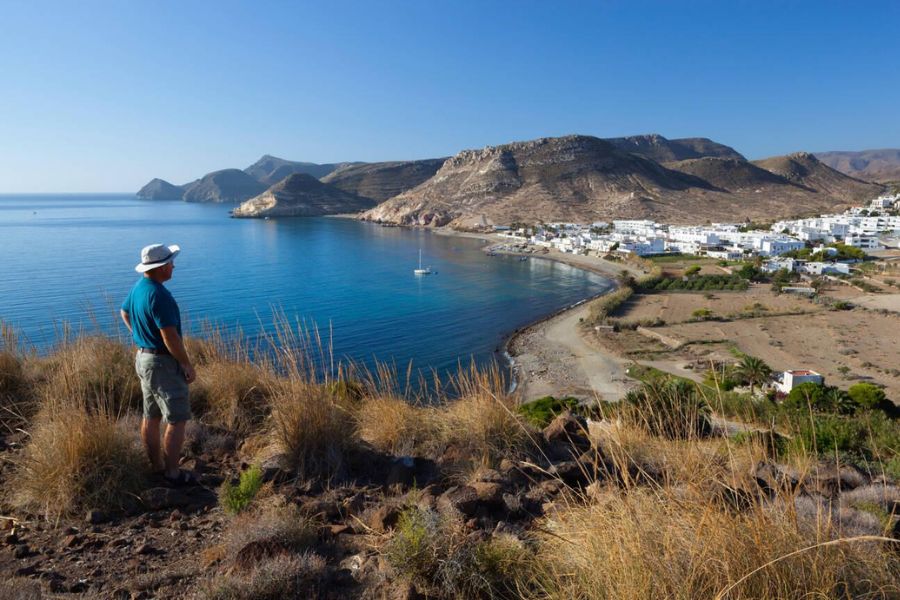
Best Campsites and Eco-Lodges
Sleeping under the stars is a must for me whenever I’m here. Cabo de Gata-Níjar has a handful of eco-lodges and campsites that really let you soak in the landscape.
I always go for the smaller places that blend into the scenery. Big crowds just ruin the vibe.
Top spots to stay:
| Name | Type | Highlights |
|---|---|---|
| Camping Los Escullos | Campsite | Pool, bungalows, tent pitches |
| Cortijo el Sotillo | Eco-lodge | Farmhouse vibe, near the beach |
| Camping Tau | Campsite | Shady tents, friendly atmosphere |
At these spots, I find the comforts are simple—solar showers, local food, and a laid-back feel. Most places ask guests to keep lights low at night, which makes the stargazing even better.
Falling asleep to the sound of wind and distant waves? That’s the stuff I come back for.
How the Night Transforms the Park
At night, Cabo de Gata-Níjar turns into a completely different place.
The heat slips away, and a cool breeze drifts in. Somehow, the scent of wild herbs gets even stronger.
The rocky cliffs and sand dunes take on a new look under the moonlight.
I like wandering the quiet trails after dark. Usually, I just hear my own footsteps.
Foxes and night birds start moving around more once the sun goes down. Sometimes I spot a gecko clinging to a rock, or I catch the flutter of bats overhead.
The silence here feels deep, only broken by the rustle of grass or the sound of waves.
Honestly, these nighttime moments make me realize how wild and untouched this park really is. Without all the distractions of daylight, I feel a connection to the land that sticks with me long after I leave.

